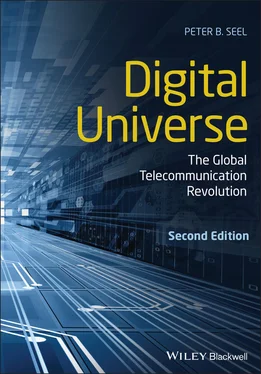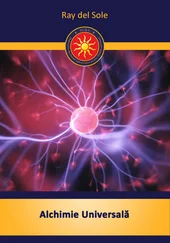12 12.Russonello, G. (2021, January 11). Impeachment looms: What is next for the G.O.P.? The New York Times. Retrieved from, https://www.nytimes.com/2021/01/11/us/politics/impeachment-republican-party.html.
13 13.Lucas, R. (2020, August 18). Senate releases final report on Russia’s interference in 2016 election. NPR, All things considered. Retrieved from, https://www.npr.org/2020/08/18/903616315/senate-releases-final-report-on-russias-interference-in-2016-election.
14 14.Lewis-Kraus, G. (2020, January 15). Bad algorithms didn’t break democracy. Wired. Retrieved from, https://www.wired.com/story/polarization-politics-misinformation-social-media.
15 15.The Greek root word “kyber” is also the source of the English word “govern”.
16 16.Cited in Macnamara, J. (2010). Sorting myths and cyberbole from trends and tipping points. In J. Macnamara, The 21st century media (r)evolution. New York: Peter Lang Publishing Inc, pp. 105–135.
2 The Future of Moore’s Law in the Digital Universe
“Moore’s law really is dead this time.”
Peter Bright (2016) 1
“The report of my death was an exaggeration.”
Mark Twain (1897) 2
Few phenomena in the digital universe have had such a profound effect on information and communication technology as Moore’s law (named after Gordon Moore [Figure 2.1]). It can be stated succinctly in two different ways:
“Transistor density on integrated circuits doubles about every two years.” – The Intel Corporation 5
“The size of each transistor on an integrated circuit chip will be reduced by 50 percent every twenty-four months.” – Raymond Kurzweil 6
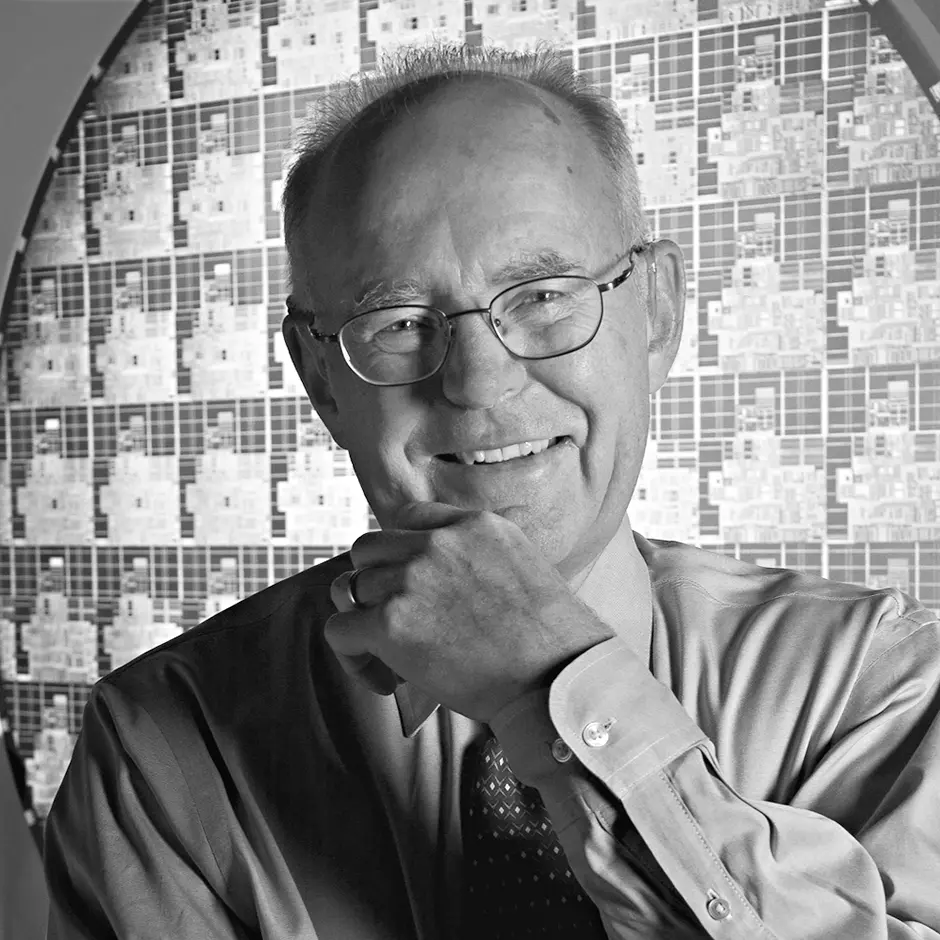
Figure 2.1 Gordon Moore in front of a photo of a projected and greatly enlarged silicon wafer containing many integrated circuits. Source: Intel Corporation 3. “Moore once computed that if the automobile industry followed a similar doubling pattern as ICs [integrated circuits], cars today would get 100,000 miles per gallon, travel at speeds of millions of miles per hour, and be so inexpensive that it would cost less to buy a Rolls-Royce than to park it downtown for a day. However, a friend pointed out that the car ‘would only be a half-inch long and a quarter-inch high,’ and not very useful at those dimensions.” Source: Michael Kannellos. 4
The doubling of computer central processing unit (CPU)speed and storage capacity every two years since 1970 has dramatically affected every type of digital technology. This doubling presents an exponential growth rate in computing and storage capacity that is astonishing for its longevity over more than half a century (see Figure 2.2). Consider any device that you use daily that has a digital processor or storage chip in it – a mobile phone, digital camera, notebook computer, large flat-screen television display, microwave oven, or any other device that can process or store digital information. The simultaneous miniaturization and exponential expansion of the processing power of these chips makes it possible for a mobile phone to include a music player, internet browser, video camera, and GPS location finder. Next time you use your mobile phone, consider its power as an information-processing device and think about the reaction of telephone inventor Alexander Graham Bell (profiled in Chapter 8) if he could see it demonstrated.
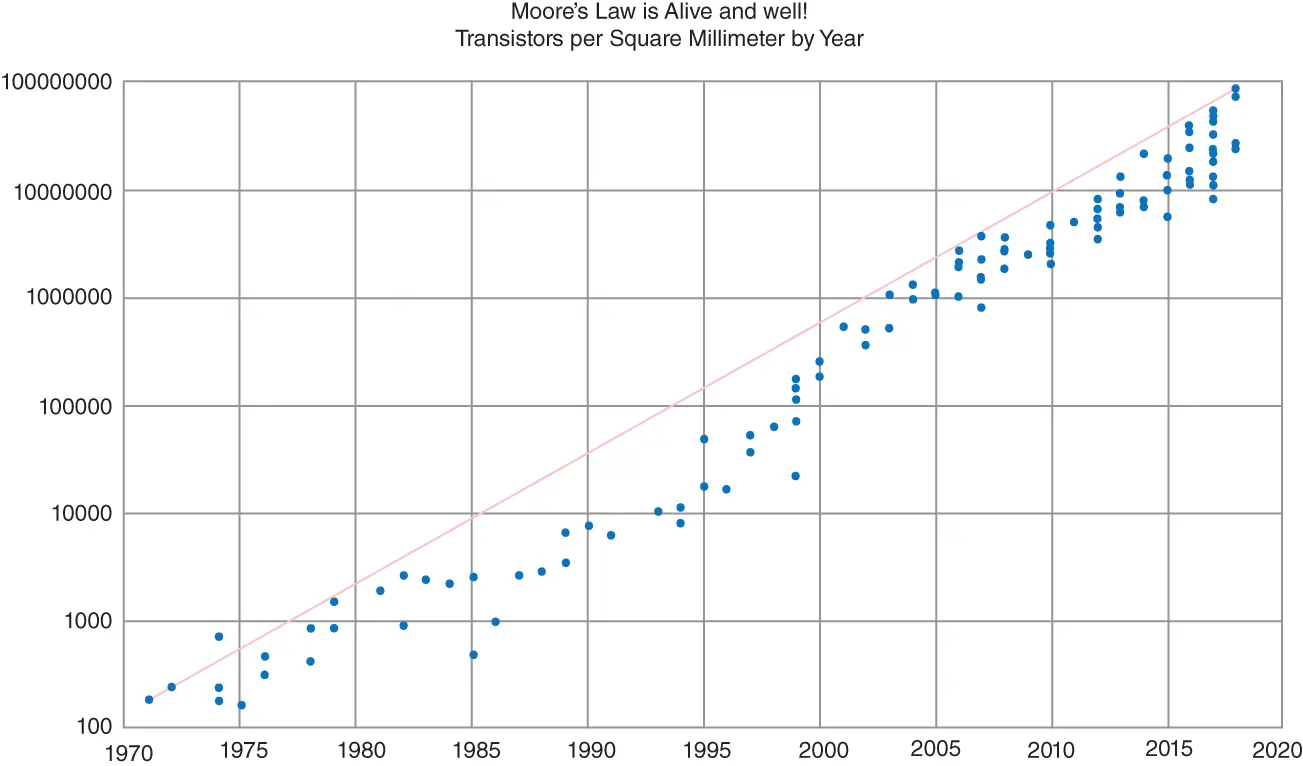
Figure 2.2 Moore’s Law Holding True to 2020. Source: Max Roser and Hannah Ritchie, “Moore’s Law Transistor Count”, Wikipedia. Licensed under CC BY 4.0 8.
Dr. Yale Patt, a computer science professor at the University of Texas at Austin, addresses Moore’s law in his introductory lectures by asking the following question of his students:
What is Moore’s law about?
1 Physics?
2 Computer process technology?
3 Computer micro-architecture?
4 Psychology?
The correct answer according to Dr. Patt is d. – Psychology. 7His thesis is that Moore’s law has become a self-fulfilling prophecy. Designers of integrated circuits (and their managers) at AMD, Intel, TSMC, and other chip manufacturers have psychologically adapted to the expectation that there will be a new generation of chips every 24 months with double the transistor capacity of previous versions. If Intel does not deliver new chips with this improved capacity, its executives know that AMD or other competitors will.
As a pattern of growth, few natural systems can sustain exponential doubling for long. Resource constraints, environmental degradation, or other natural limits inhibit growth. These limitations have long led critics to suggest that Moore’s law was unsustainable, but they overlooked that this is a human-created technology based on the fundamental properties of silicon, not an organic phenomenon. The technological implications of Moore’s law are not all sweetness and light. The notebook computer you bought two years ago is now worth less than half of what you paid for it – assuming that you can find anyone who would want to buy it in your community. The only real options are to donate it for use elsewhere or recycle the components. There is a planned obsolescence associated with Moore’s law that is very good news for chip makers, computer manufacturers, and software producers – and not such great news for consumers. We will return to this aspect of Moore’s law later, but it is worth contemplating in terms of developing a sense of critical literacy discussed in the preface.
In 1965, then-Fairchild Semiconductor executive Gordon Moore published a short article in the April issue of Electronics magazine entitled “Cramming more components onto integrated circuits.” 9In the article, Moore predicted that within a decade (by 1975), evolving silicon chip technology would permit the fabrication of integrated circuits (ICs) with 65,000 components (transistors) on a single chip. Given the state of IC manufacturing in 1965, his then-startling prediction suggested that the number of transistors on a chip would double each year in the decade between 1965 and 1975. Moore included a table (see Figure 2.3) that featured a logarithmic scale demonstrating this doubling of components on a chip from 1962 to 1965 and then extending this plot into the future. I have reversed the X and Y scales in the version below (with time on the Y scale) for the sake of clarity. Note that this calculation was based on just four confirmed data points (1962 to 1965), and was quite a bold prognostication given the predicted doubling of components at yearly intervals. Yet Moore’s prediction for this remarkable technological feat proved to be prescient, even if the doubling intervals were to be closer to 18 to 24 months and are now approximately 30 months.
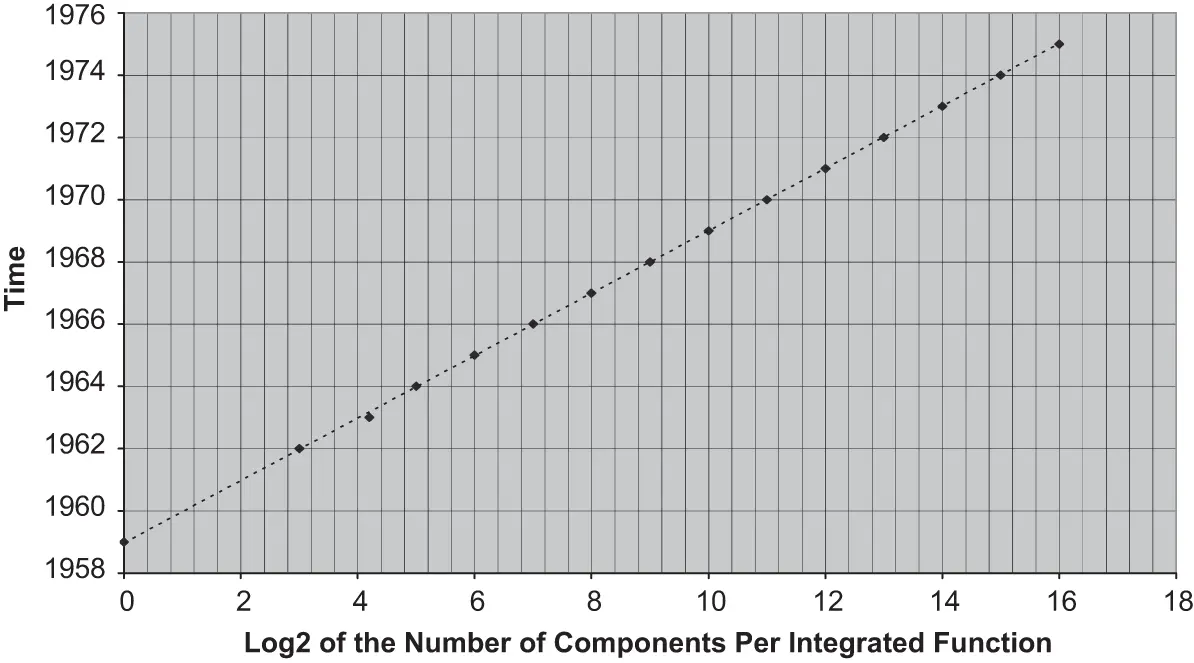
Figure 2.3 Moore’s Law Re-plotted. Source: Modified by author after the original in Electronics , Vol. 38, Number 8.
Three years later, Moore left his position as director of the research and development laboratories at Fairchild to start a new company with partners Robert Noyce and Andrew Grove. Its name was short and memorable – the Intel Corporation. In 1975, Moore revised the time-frame for chip evolution from one year intervals to two years in a speech he gave to the Institute of Electrical and Electronics Engineers (IEEE). 10For several decades, Moore modestly declined the honor of having the law named after him and attributes the name to California Institute of Technology computer scientist Carver Mead. 11It was to provide a prescient method of reference for the exponential growth in the power of integrated circuits over the following 60 years. It is important to note that the meaning of the law has evolved over time from a literal count of the transistors on a chip, to a contemporary interpretation related to the processing power and speed of the components on a multifunction chip. 12
Читать дальше
